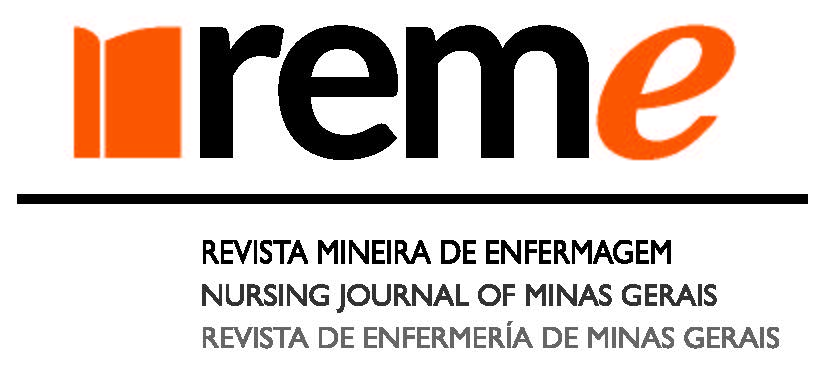Animal therapy as a Nursing intervention for pain management
A systematic review
DOI:
https://doi.org/10.35699/2316-9389.2024.42225Keywords:
Systematic Review, Pain, Animal-Assisted Therapy, NursingAbstract
Objective: To analyze the available evidence on using animal-assisted therapy in Nursing for pain management. Method: A systematic review of 15 sources of information was conducted. Randomized clinical trials that used animal-assisted therapy for pain management in any population, in different healthcare settings, or others, as long as they had therapeutic purposes, were included. Studies that used animal-assisted therapy in combination with other intervention methods were also included. Control studies included standard treatment or other non-pharmacological interventions for pain management. There were no restrictions regarding sex, age, or ethnic origin. Theses, dissertations, editorials, and studies with incomplete data were excluded. Two researchers independently conducted the search and data extraction. Due to the diversity of the studies, only qualitative data analysis was performed. The risk of bias was assessed based on the Cochrane Collaboration Risk of Bias. Results: Twelve articles were included in the analysis, and the treatment protocol was not standardized. Moreover, 16.67% of the studies presented a high risk of bias, 50.00% showed some concerns, and 33.33% had a low risk. Although the majority of the studies (75%) reported positive results for pain management, due to the diversity of the studies, it was not possible to assert the effect of the intervention on this variable. Conclusion: Although most of the studies obtained satisfactory results, insufficient evidence supports or refutes the use of animal-assisted therapy in Nursing for pain management. The results highlight the need for standardized and detailed studies in this relatively new area of Nursing.
Downloads
References
Raja SN, Carr DB, Cohen M, Finnerup NB, Flor H, Gibson S, et al. The revised International Association for the Study of Pain definition of pain: concepts, challenges, and compromises. Pain [Internet]. 2020[citado em 2022 fev. 15];1;161(9):1976-82. Disponível em: 10.1097/j.pain.0000000000001939
Porreca F, Navratilova E. Reward, motivation and emotion of pain and its relief. Pain [Internet]. 2017[citado em 2022 fev. 15];158(Suppl 1):S43-9. Disponível em: 10.1097/j.pain.0000000000000798
Ferrari MFM, Daher DV, Antunes JM, Amim EF, Jesus CM, Geraldo MA. Pain as the fifth vital sign, challenges for its incorporation in health training. REME - Rev Min Enferm [Internet]. 2019[citado em 2022 fev. 15];23:e-1233. Disponível em: 10.5935/1415-2762.20190081
Zhang Y, Yan F, Li S, Wang Y, Ma Y. Effectiveness of animal-assisted therapy on pain in children: A systematic review and meta-analysis. Int J Nurs Sci [Internet]. 2021[citado em 2022 fev. 15]10;8(1):30-7. Disponível em: 10.1016/j.ijnss.2020.12.009
Butcher HK, Bulechek GM, Dochterman JM, Wagner CM. Nursing Interventions Classification (NIC). 7th ed. Maryland Heights: Mosby; 2020.
Ribeiro CDPV, Alves JB, Kominami PA, Takeshita EM, Bezerra ACB, Massignan C. Does use of animal therapy during dental care help to reduce anxiety in children and adolescents? A systematic review. Int J Paediatr Dent [Internet]. 2022[citado em 2022 fev. 15]8;1- 15. Disponível em: 10.1111/ipd.13033
Higgins JPT, Thomas J, Chandler J, Cumpston M, Li T, Page MJ, et al. Cochrane Handbook for Systematic Reviews of Interventions version 6.2. Cochrane [Internet]; 2021[citado em 2022 fev. 15]. Disponível em: https://training.cochrane.org/handbook
Page MJ, Moher D, Bossuyt PM, Boutron I, Hoffmann TC, Mulrow CD, et al. PRISMA 2020 explanation and elaboration: updated guidance and exemplars for reporting systematic reviews. BMJ [Internet]. 2021[citado em 2022 fev. 15]29;372:n160. Disponível em: 10.1136/bmj.n160
Aslam S, Emmanuel P. Formulating a researchable question: A critical step for facilitating good clinical research. Indian J Sex Transm Dis & AIDS [Internet]. 2010[citado em 2022 fev. 15];31(1):47-50. Disponível em: 10.4103/0253-7184.69003
Mcglinchey MP, James J, Mckevitty C, Douiri A, Mclachlan S, Sacley CM. The effect of rehabilitation interventions on physical function and immobility-related complications in severe stroke - protocol for a systematic review. Syst Rev [Internet]. 2018[citado em 2022 fev. 15];7(1):197. Disponível em: 10.1186/s13643-018-0870-y
Higgins JPT, Savovic J, Page MJ, Elbers RG, Sterne JAC. Chapter 8: Assessing risk of bias in a randomized trial. In: Higgins JPT, Thomas J, Chandler J, Cumpston M, Li T, Page MJ, et al. Cochrane Handbook for Systematic Reviews of Interventions version 6.2. 2021[citado em 2022 fev. 15]. Disponível em: https://www.training.cochrane.org/handbook
Miles MB, Huberman AM. Qualitative Data Analysis: An Expanded Sourcebook. 2nd ed. Thousand Oaks, CA: Sage Publications; 1994.
Barker SB, Knisely JS, Schubert CM, Green JD, Ameringer S. The Effect of an Animal-Assisted Intervention on Anxiety and Pain in Hospitalized Children. Anthrozoös [Internet]. 2015[citado em 2022 fev. 15];28(1):101-12. Disponível em: 10.2752/089279315X14129350722091.
Clark S, Martin F, Mcgowan RTS, Smidt J, Anderson R, Wang L, et al. The Impact of a 20-Minute Animal-Assisted Activity Session on the Physiological and Emotional States in Patients With Fibromyalgia. Mayo Clinic Proceedings [Internet]. 2020[citado em 2022 fev. 15];95(11):2442-61. Disponível em: 10.1016/j.mayocp.2020.04.037
Harper CM, Dong Y, Thornhill TS, Wright J, Ready J, Brick GW, et al. Can Therapy Dogs Improve Pain and Satisfaction After Total Joint Arthroplasty? A Randomized Controlled Trial. Clin Orthop Relat Res [Internet]. 2015[citado em 2022 fev. 15];473(1):372-9. Disponível em: 10.1007/s11999-014-3931-0
Kline JA, Fisher MA, Pettit KL, Linville CT, Beck AM. Controlled clinical trial of canine therapy versus usual care to reduce patient anxiety in the emergency department. PLoS One [Internet]. 2019[citado em 2022 fev. 15];14(1):e0209232. Disponível em: 10.1371/journal.pone.0209232
Thompkins AM, Adkins SJ, Leopard M, Spencer C, Bentley D, Bolden L, et al. Dogs as an Adjunct to Therapy: Effects of Animal-Assisted Therapy on Rehabilitation Following Spinal Cord Injury. Anthrozoös [Internet]. 2019[citado em 2022 fev. 15];32(5):679-90. Disponível em: https://Disponível em.org/10.1080/08927936.2019.1645513
White-Lewis S, Johnson R, Ye S, Russell C. An equine-assisted therapy intervention to improve pain, range of motion, and quality of life in adults and older adults with arthritis: A randomized controlled trial. Appl Nurs Res [Internet]. 2019[citado em 2022 fev. 15];49:5-12. Disponível em: 10.1016/j.apnr.2019.07.002
Ambrosi C, Zaiontz C, Peragine G, Sarchi S, Bona F. Randomized controlled study on the effectiveness of animal-assisted therapy on depression, anxiety, and illness perception in institutionalized elderly. Psychogeriatrics [Internet]. 2019[citado em 2022 fev. 15];19(1):55-64. Disponível em: 10.1111/psyg.12367
Calcaterra V, Veggiotti P, Palestrini C, De Giorgis V, Raschetti R, Tumminelli M, et al. Post-Operative Benefits Of Animal-Assisted Therapy in Pediatric Surgery: A Randomised Study. PLoS One [Internet]. 2015[citado em 2022 fev. 15];10(6):e0125813. Disponível em: 10.1371/journal.pone.0125813
Vagnoli L, Caprilli S, Vernucci C, Zagui S, Mugnai F, Messeri A. Can Presence of a Dog Reduce Pain and Distress in Children during Venipuncture? Pain Manag Nurs [Internet]. 2015[citado em 2022 fev. 15];16(2):89-95. Disponível em: 10.1016/j.pmn.2014.04.004
Vermöhlen V, Schiller P, Schickendantz S, Drache M, Hussack S, Gerber-Grote A. Hippotherapy for patients with multiple sclerosis: A multicenter randomized controlled trial (MS-HIPPO). Mult Scler [Internet]. 2018[citado em 2022 fev. 15];24(10):1375-82. Disponível em: 10.1177/1352458517721354
Rodrigo-Claverol M, Casanova-Gonzalvo C, Malla-Clua B, Rodrigo-Claverol E, Jové-Naval J, Ortega-Bravo M. Animal-Assisted Intervention Improves Pain Perception in Polymedicated Geriatric Patients with Chronic Joint Pain: A Clinical Trial. Int J Environ Res Public Health [Internet]. 2019[citado em 2022 fev. 15];16(16):2843. Disponível em: 10.3390/ijerph16162843
Carey B, Dell CA, Stempien J, Tupper S, Rohr B, Carr E, et al. Outcomes of a controlled trial with visiting therapy dog teams on pain in adults in an emergency department. PLoS One [Internet]. 2022[citado em 2022 fev. 15];17(3):e0262599. Disponível em: 10.1371/journal.pone.0262599
Carvalho APV, Silva V, Grande AJ. Avaliação do risco de viés de ensaios clínicos randomizados pela ferramenta da colaboração Cochrane. Diagn Tratamento [Internet]. 2013[citado em 2022 fev. 15] ;18(1):38-44.
Mattila-Rautiainen S, Venojärvi M, Rautiainen H, Keski-Valkama A. The impact on physical performance, pain and psychological wellbeing of chronic low back pain patients during 12-weeks of equine- facilitated therapy intervention. Front. Vet. Sci [Internet]. 2023[citado em 2022 fev. 15];10:1085768. Disponível em: 10.3389/fvets.2023.1085768
Beetz A, Uvnäs-Moberg K, Julius H, Kotrschal K. Psychosocial and psychophysiological effects of human-animal interactions: the possible role of oxytocin. Frontiers in psychology [Internet]. 2012[citado em 2022 fev. 15];3:234. Disponível em: 10.3389/fpsyg.2012.00234
Wagner C, Gaab J, Hediger K. The Importance of the Treatment Rationale for Pain in Animal-Assisted Interventions: A Randomized Controlled Trial in Healthy Participants. The Journal of Pain[Internet]. 2023[citado em 2022 fev. 15];24(6):1080-93.
Moura CC, Chaves ECL, Souza VHS, Iunes DH, Ribeiro CRG, Paraizo CMS, et al. Impactos da dor crônica na vida das pessoas e a assistência de Enfermagem no processo. Av Enferm [Internet]. 2017[citado em 2022 fev. 15];35(1):53-62. Disponível em: 10.15446/av.enferm.v35n1.61006
Scher BAC, Meador MPHL, Cleave JHV, Reid MC. Moving Beyond Pain as the Fifth Vital Sign and Patient Satisfaction Scores to Improve Pain Care in the 21st Century. Pain Manag Nurs [Internet]. 2018[citado em 2022 fev. 15];19(2):125-9. Disponível em: 10.1016/j.pmn.2017.10.010
Mandrá PP, Moretti TCF, Avezum LA, Kuroishi RCS. Animal assisted therapy: systematic review of literature. Codas [Internet]. 2019[citado em 2022 fev. 15];31(3):e20180243. Disponível em: 10.1590/2317-1782/20182018243
Stensland ML, McGeary DD. Use of animal-assisted interventions in relieving pain in healthcare settings: A systematic review. Complementary Therapies in Clinical Practice [Internet]. 2022[citado em 2022 fev. 15];46:101519. Disponível em: 10.1016/j.ctcp.2021.101519
Additional Files
Published
Issue
Section
License
Copyright (c) 2024 REME-Revista Mineira de Enfermagem

This work is licensed under a Creative Commons Attribution 4.0 International License.





































